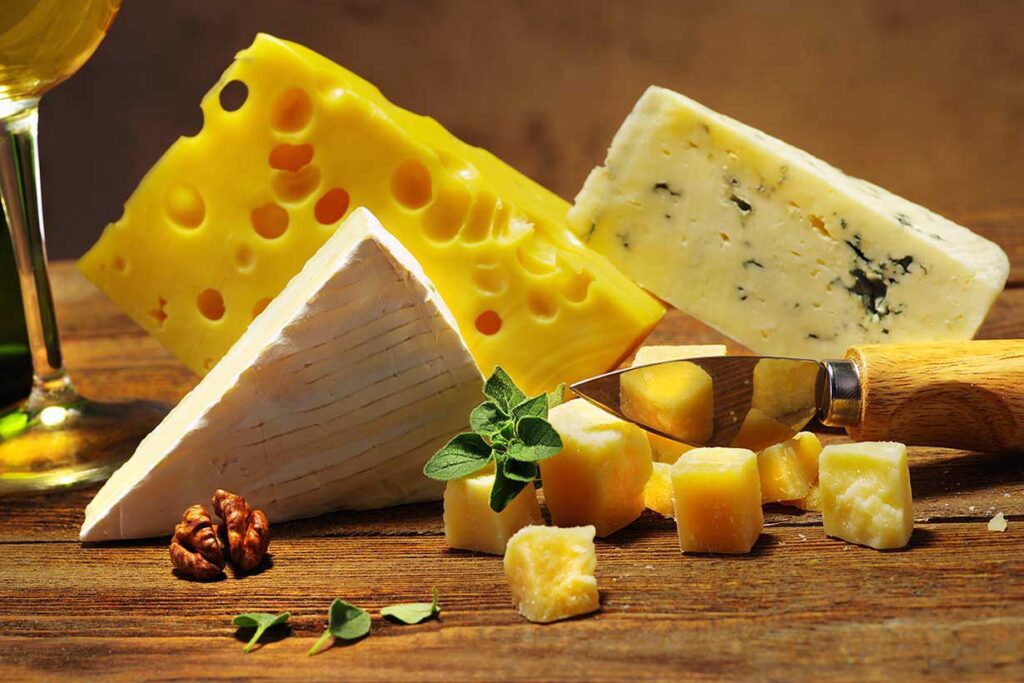Cheese, a dairy delight cherished worldwide, boasts a rich history and an endless variety of flavors, textures, and uses.

Let’s savor the journey through the fascinating world of cheese:
1. A Timeless Tradition:
Cheese-making dates back thousands of years, with evidence of its production found in ancient Egyptian tomb murals.
2. Cheese Categories:
Hard Cheeses:
Examples include Cheddar, Parmesan, and Gouda. These are aged and typically have a firm texture.
Soft Cheeses:
Brie, Camembert, and goat fall into this category. They are creamy and spreadable when young.
Blue Cheeses:
Stilton, Roquefort, and Gorgonzola are known for their distinctive blue veins and bold flavors.
Fresh Cheeses:
Mozzarella, feta, and ricotta are often used in salads and dishes where a mild, fresh is desired.
3. Global Cheese Map:
Cheese production is a global affair. France, Italy, and Switzerland are renowned for their artisanal, while countries like the United States have a thriving industry.
4. Art of Aging:
Aging is akin to fine wine. The longer the aging process, the more complex the flavors become. Parmesan, aged for up to two years, develops a sharp and nutty profile, while young cheddar offers a milder taste.
5. Pairing Perfection:
Pairs wonderfully with a variety of accompaniments, including wine, fruits, crackers, and honey. A classic combination is wine with the flavors of each complementing and enhancing the other.
6. Iconic Dishes:
This plays a starring role in iconic dishes like pizza, lasagna, macaroni, and fondue.
7. Health Benefits:
It provides essential nutrients like calcium, protein, and vitamin B12. Balance is essential, given that can contain substantial levels of saturated fats and sodium.
8. Farm-to-Table Cheese:
Artisanal and farmstead emphasize local production and traditional methods, resulting in unique flavors and a connection to the land.
9. Cheese Varieties Around the World:
From creamy Italian burrata to tangy Greek feta and smoky Spanish Manchego, it reflects the cultural diversity of the world’s cuisines.
10. Creative Pairings:
Chefs and food enthusiasts experiment with pairings, exploring combinations like blue cheese or goat cheese and figs.
11. Dairy-Free Alternatives
With growing dietary preferences, dairy-free made from nuts, soy, or coconut is gaining popularity, providing options for those with lactose intolerance or vegan diets.
12. Cheese Festivals:
People unite at festivals like the Wisconsin Festival in the USA and the International Awards in the UK to celebrate this dairy delicacy.
Conclusion:
With its myriad flavors, textures, and cultural significance, is not just a food but a culinary art form. Whether enjoyed as a standalone delight, paired with wine, or incorporated into a delectable dish, continues to be a beloved ingredient that transcends borders and brings people together in a shared appreciation of its delicious diversity.
